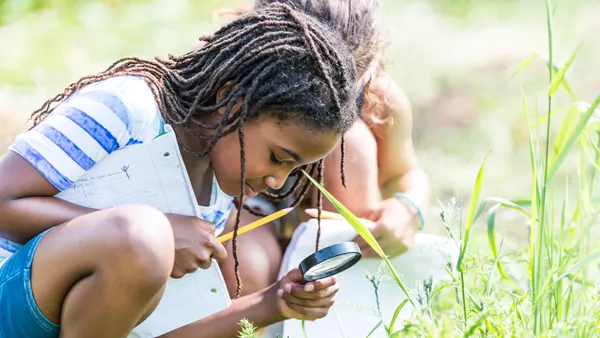Dive Brief:
- STEAM instruction from a well-trained educator can boost science achievement scores among students in high-poverty elementary schools, according to a study recently highlighted by the Arts Education Partnership.
- Conducted in California, the quasi-experimental study shows that students in 3rd-5th grade who received the nine one-hour blocks of STEAM instruction — focusing on the visual and performing arts — went from the 50th to the 63rd percentile on their district’s science assessment. Previous studies showed English learners gained the most from STEAM-focused programs, but this research suggests all students can learn from this approach and “envision phenomena that they were not able to directly observe,” the authors write.
- The fact that the researchers only collected one year of data is a limitation of the study, and further questions also include how a STEAM approach might impact achievement at the middle school level and what type of teacher preparation and professional development is most effective.
Dive Insight:
The purpose of blending the arts with STEM is not just to make sure the arts are not left behind as schools focus on improving test scores in core subject areas. The arts give students creative ways to tackle tough concepts, help them ask better questions, and use multiple methods to solve problems, according to a blog post from Concordia University-Portland.
A STEAM approach also gives all students opportunities for hands-on learning, increases the chances that girls will stay engaged in STEM-related subject areas, and reinforces the importance of the arts, they write.
With the Every Student Succeeds Act calling out the arts as part of a "well-rounded" education, schools have more incentive to integrate arts into core subject areas, using techniques such as visual thinking strategies in science and hip-hop to increase literacy skills.











